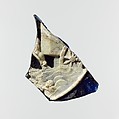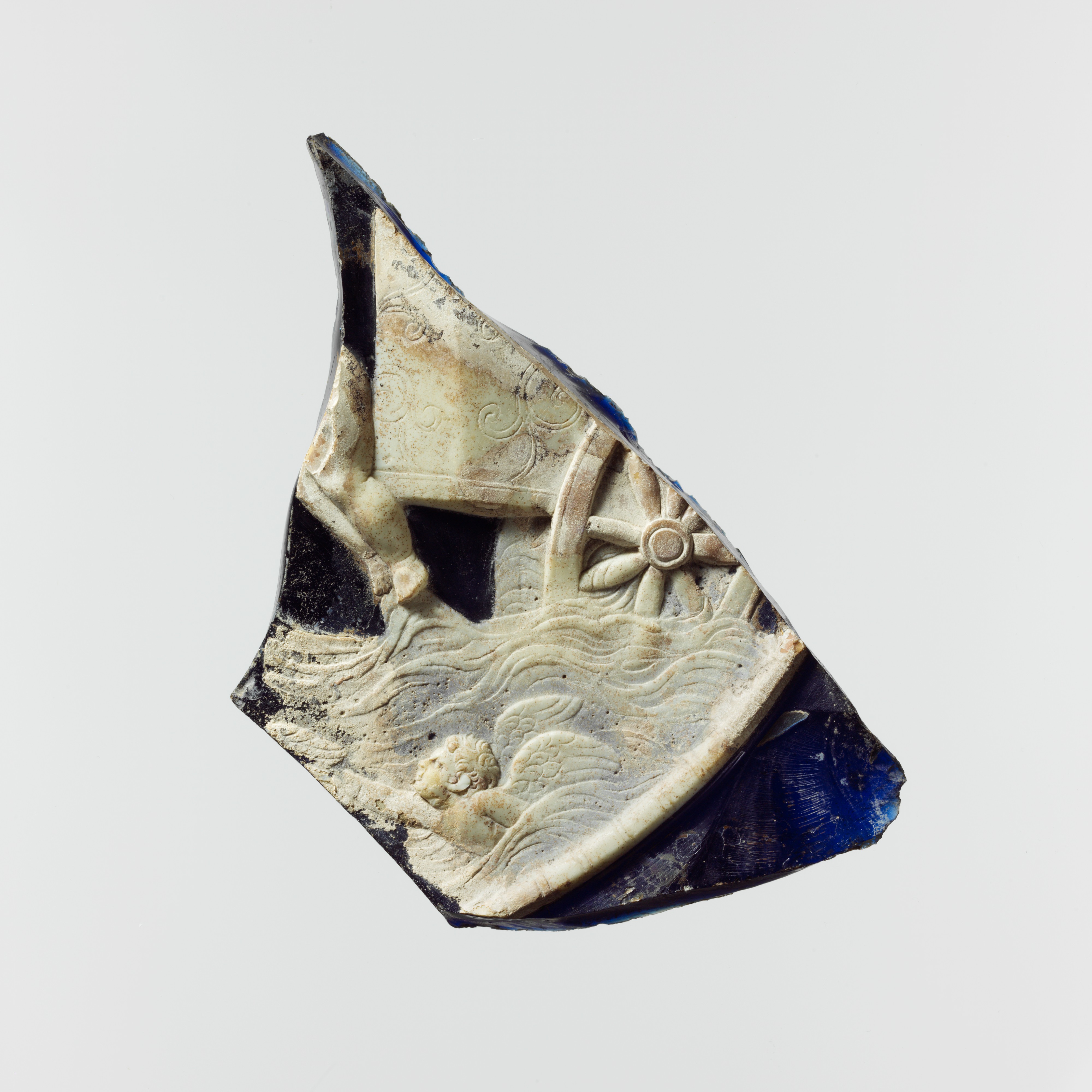Glass cameo plate fragment
Translucent deep cobalt blue and opaque white.
Thick-walled fragment of large circular dish with gently curving side and part of bottom.
On exterior, recessed molding of circular base ring; on interior, decoration carved in white overlay with a raised circular frame of beading surrounding a figural scene of two cupids pulling the chariot of Venus over the sea; the front of the car, decorated with fine incised scrolls, survives along with a large part of the eight-spoked left wheel whose lower part is sunk below the waves; in front of the car one cupid has just risen from the sea but only his legs survive; the other cupid swims below in the choppy sea, his wings are visible behind his back, his head is raised, and his proper right arm is outstretched, but most of his body is hidden below the waves. The cameo decoration fills the center of the shallow dish, surrounded by a plain cavetto in blue ground.
Broken on all sides, with many chipped edges; surface scratches on exterior; dulling, slight pitting, faint iridescence, and patches of creamy brown weathering.
Specialized skills were required to produce cast slabs or blown vessels of layered glass, and to these were added delicate carving of the layers to create artistic representations of the highest quality. This fragment, which comes from a large plate more than one foot in diameter, is decorated with a scene of cupids pulling a chariot across the sea.
Due to rights restrictions, this image cannot be enlarged, viewed at full screen, or downloaded.
This artwork is meant to be viewed from right to left. Scroll left to view more.



